Throughout The University of Tulsa’s history, the University has embraced the importance of a library to the academic community. In the First Annual Catalogueof Henry Kendall College, Muskogee, Indian Territory, 1894, a page was set aside declaring the needs of the college. The first need was scholarships — $100.00 would pay all expenses for one student for one year. The second read:
The Library stands greatly in need of reference books, especially in history, science and English language and literature. The college greatly needs $500 for library purposes. One hundred dollars just at this time would relieve a part of the extreme necessity. An endowment fund would advance the work greatly.
 By 1901, the library, a room in the administration building, contained 1200 books. When the University moved to Tulsa, and to its eventual home, three miles east of town, a room was set aside in the administration building, later Kendall Hall, to house the growing collection of volumes.
By 1901, the library, a room in the administration building, contained 1200 books. When the University moved to Tulsa, and to its eventual home, three miles east of town, a room was set aside in the administration building, later Kendall Hall, to house the growing collection of volumes.
By 1928, The University of Tulsa had 16,000 books and was in desperate need of a dedicated facility to serve the student population.
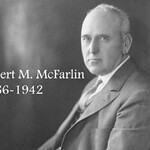 McFarlin Library was the first of the three new buildings to be erected at The University of Tulsa and it was selected as the central feature. The library became the focal point of the campus and dictated the future growth of the campus. Robert M. McFarlin and his wife, Ida Mae Barnard McFarlin, donated the structure, as well as the book stacks and the furnishings. McFarlin, a successful Tulsa oilman and rancher, was well-known for his contributions towards church and educational memorial buildings.
McFarlin Library was the first of the three new buildings to be erected at The University of Tulsa and it was selected as the central feature. The library became the focal point of the campus and dictated the future growth of the campus. Robert M. McFarlin and his wife, Ida Mae Barnard McFarlin, donated the structure, as well as the book stacks and the furnishings. McFarlin, a successful Tulsa oilman and rancher, was well-known for his contributions towards church and educational memorial buildings.
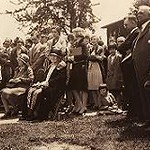 At the groundbreaking for the new library, on May 3, 1929, John Rogers, a University Trustee, stated “this building will be probably the most important on the campus for it is in reading and in books that our finest wisdom is stored.”
At the groundbreaking for the new library, on May 3, 1929, John Rogers, a University Trustee, stated “this building will be probably the most important on the campus for it is in reading and in books that our finest wisdom is stored.”
The building was designed by Henry C. Hibbs, a Nashville architect.
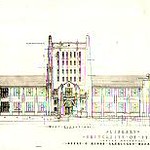 After a year, the building standing at the head of the ‘U’, designed by Henry C. Hibbs and built by Bellows Construction, was complete.
After a year, the building standing at the head of the ‘U’, designed by Henry C. Hibbs and built by Bellows Construction, was complete.
At the dedication, on June 1, 1930, guest speaker J. L. Rader, University of Oklahoma Librarian, proclaimed “the library is the only unbiased force left in the world. The library is the only place where one in quest of knowledge may go and pursue his studies without outside influences being brought to shape his opinion. The library presents every side of a question without itself taking sides, leaving the reader to form his own opinions.”
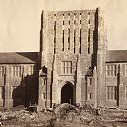
The new McFarlin Library was dedicated by L. S. McLeod, Acting Dean of the College of Arts and Sciences, with the following words:
In memory of those great teachers and scholars who
have labored through the centuries, and have
bequeathed to us in written form the fruits of their toil
We dedicate this building
In memory of those who believed in wisdom and
righteousness and who founded this fellowship of
teachers and students
We dedicate this building
That comradeship here may be found, scholars of all
interests, masters and disciples in the way of learning,
people of the school and people of the city, sharing
together the treasures of learning
We dedicate this building.
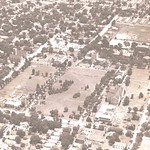 One area that made the library popular with the students was the Browsing Room, a place where students could actually place their hands on a book, without having to have it paged from the closed stacks by a staff member.
One area that made the library popular with the students was the Browsing Room, a place where students could actually place their hands on a book, without having to have it paged from the closed stacks by a staff member.
The circulation desk, as well as the place where books were paged from was situated just inside the main entrance, now the West entrance, beneath the first arch as you enter.
 Over the years, as TU’s educational offerings expanded so did the need for a larger library that could support more undergraduate and graduate programs. The five-story addition on the east side of the original building was funded by the Chapman-McFarlin interests in 1967 and doubled the library’s usable space. This addition provided the space for additional research materials to support new Ph.D. programs in English and engineering.
Over the years, as TU’s educational offerings expanded so did the need for a larger library that could support more undergraduate and graduate programs. The five-story addition on the east side of the original building was funded by the Chapman-McFarlin interests in 1967 and doubled the library’s usable space. This addition provided the space for additional research materials to support new Ph.D. programs in English and engineering.
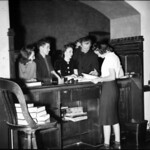 However the needs of the library and university continued to grow, and in 1979 the library dedicated its second addition. Coinciding with the acquisition of the one millionth volume added to the library, the new addition extended McFarlin Library to the west. This innovative three floor underground addition provided new stacks areas as well as new study space for the student body. A new sunken central courtyard created an attractive outdoor space and provided natural lighting for adjacent study areas.
However the needs of the library and university continued to grow, and in 1979 the library dedicated its second addition. Coinciding with the acquisition of the one millionth volume added to the library, the new addition extended McFarlin Library to the west. This innovative three floor underground addition provided new stacks areas as well as new study space for the student body. A new sunken central courtyard created an attractive outdoor space and provided natural lighting for adjacent study areas.
McFarlin Library celebrated its 75th Anniversary with a variety of events that included an open house during homecoming and an event in April 2005 featuring Richard West, founding Director of the National Museum of the American Indian. Thomas Staley, Director of the Harry Ransom Research Center at The University of Texas at Austin spoke at the official rededication ceremony on June 1, 2005.
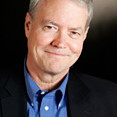 In February 2007, McFarlin Library welcomed its first Robert and Ida McFarlin Dean of the Library, Adrian Alexander. In September 2009 the building was rededicated to celebrate the addition of the Pauline M. Walter Technology Resources Center, as well as to unveil a host of renovations to the older building intended to encourage the use of McFarlin Library as an academic commons for the campus.
In February 2007, McFarlin Library welcomed its first Robert and Ida McFarlin Dean of the Library, Adrian Alexander. In September 2009 the building was rededicated to celebrate the addition of the Pauline M. Walter Technology Resources Center, as well as to unveil a host of renovations to the older building intended to encourage the use of McFarlin Library as an academic commons for the campus.
The future of the Library is as yet unwritten, but McFarlin Library will continue to play a pivotal role in both the academic and social life of The University of Tulsa.
_____________________________________________________________
References:
Logsdon, Guy W. The University of Tulsa. Norman, Ok: University of Oklahoma Press, 1977.
Olsen, Claire, ed. Pi Alpha Mu’s History of the University of Tulsa, 1935-1958. Tulsa, Ok: University of Tulsa Press, 1958.

Pingback: McFarlin Library | From McFarlin Tower